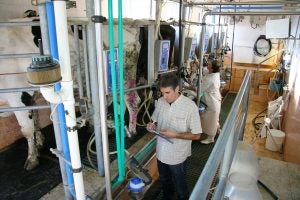A third farm worker tested positive for H5N1 in the recent U.S. string of cases; the second instance to be detected in Michigan this month.
As with the original case in Texas and a case reported last week in Michigan, the individual is a worker on a dairy farm where the H5N1 virus has been identified in cows.
The patient reported upper respiratory tract symptoms including cough without fever, and eye discomfort with watery discharge. The patient was given antiviral treatment with oseltamivir, is isolating at home, and their symptoms are resolving.
According to the Centers for Disease Control and Prevention, household contacts of the patient have not developed symptoms, are being monitored for illness, and have been offered oseltamivir. No other workers at the same farm have reported symptoms, and all staff are being monitored. At this time, there is no indication of person-to-person spread of A(H5N1) viruses.

However, this is the first human case of H5 in the United States to report more typical symptoms of acute respiratory illness associated with influenza virus infection, including A(H5N1) viruses. The CDC said it is continuing to closely monitor available data from influenza surveillance systems, particularly in affected states, and there has been no sign of unusual influenza activity in people, including no increase in emergency room visits for influenza and no increase in laboratory detection of human influenza cases.
Specimens were collected from the patient; one of which was positive for influenza A(H5) virus using the CDC test at the state health department laboratory. The specimens were forwarded to CDC for further testing. They were received on May 29, and testing results that night confirmed A(H5) virus infection. Michigan was then notified of the results.
The designation of the influenza virus neuraminidase (the N in the subtype) is pending genetic sequencing at CDC and results will be made available within 1-2 days, if successful. Additional genetic analysis will look for any changes to the virus that could change the agency’s risk assessment.
The individual tested is one of only 39 people in the U.S. that have been tested during the 2024 outbreak.


